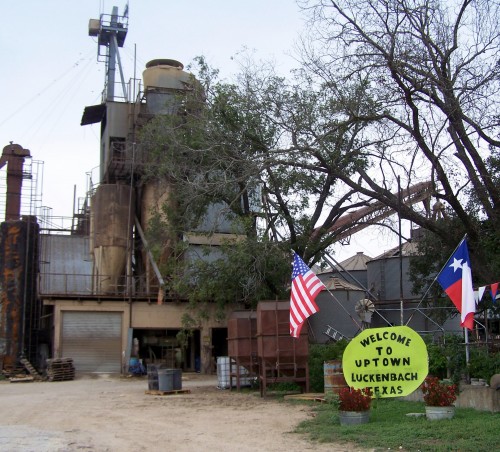Uptown Luckenbach, as opposed to downtown Luckenbach, with the famed dance-hall and concert venue. There wasn’t anything happening, much, that we could see.
texas
Oktoberfest!
Or as we say in Texas, ‘Guten Tag, y’all!”
History Friday: The English Visitor
You cannot hope to bribe or twist (thank God!) the British journalist. But, seeing what the man will do unbribed, there’s no occasion to.
The English visitor, a lawyer and pamphleteer named Nicholas Doran Maillard landed up in Texas early in 1840, when the Republic of Texas had just achieved four years of perilous existence . . . and inadvertently provided the means for an exception to Humbert Wolfe’s stinging epigram. In that year, Texas was perennially cash-broke but land rich, somewhat quarrelsome, and continually scourged by Comanche depredations from the north and west, and the threat of re-occupation by Mexico from the south, Texans had first seen immediate annexation by the United States as their sure and certain refuge. But alas, that slavery was permitted and practiced within Texas so annexation was blocked by abolitionists.
This left the Republic seeking recognition and even strong allies elsewhere, namely with France and Britain neither of whom particularly approved of the ‘peculiar institution’ but were more than willing to play the great game of international politics, especially if a foothold on the North American continent might come out of it. Both England and France eventually recognized the independent Republic; Sam Houston cannily referred to it all as a flirtation, in order to reinforce the relationship with the United States.
Friday Historical Diversion: The Mild, Mild West
Some years ago, I succumbed to the blandishments of the overloaded bookshelves at Half-Price Books. I knew I shouldn’t have wandered into the section housing assortments of ‘Texiana’ but I did and I was tempted. Since I can resist anything but temptation, I gave in and bought a slightly oversized volume (with color plates!) with the gripping title of German Artist on the Texas Frontier: Friedrich Richard Petri for a sum slightly less than the current price on Amazon. Who was Friedrich Richard Petri, you might ask and rightfully so for chances are practically no one outside of the local area might have heard of him, he finished very few substantial paintings, was only resident in the Hill Country of Texas for about seven years, and died relatively young.
The Nueces Fight – Conclusion
Late in the fall of 1862, under the mistaken assumption that they had been offered a thirty-day amnesty by the Governor of Texas and allowed to depart Texas unmolested rather than take the loyalty oath, a party of Unionists gathered together at Turtle Creek in Kerr County. They elected a settler from Comfort named Fritz Tegener as their leader, and Henry Schwethelm as second. Their number included Phillip Braubach, who had served as the sheriff of Gillespie County, and Captain John Sansom, a Texas Ranger before and after the war, and also the sheriff of Kendall County, two sons of Edwin Degener, a prominent free-thinker from Sisterdale, Heinrich Steves, whose large family had helped establish Comfort, and the Boerner brothers, one of whom had married a Steves daughter. Heinrich Stieler was also one of them; he was Henry Schwethelm’s brother-in-law and son of Gottlieb Stieler, an early settler whose family later established a ranch between Comfort and Fredericksburg which still exists today.
